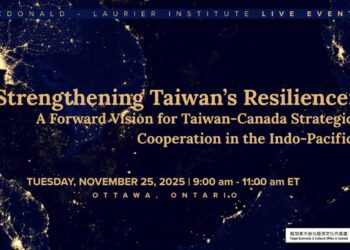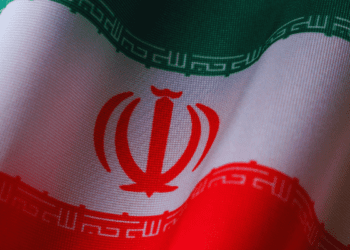 Xi’s stint in military bureaucracy comes handy in making PLA a fighting force, writes Kalpit A. Mankikar in the ORF.
Xi’s stint in military bureaucracy comes handy in making PLA a fighting force, writes Kalpit A. Mankikar in the ORF.
By Kalpit A. Mankikar, December 9, 2020
The Central Military Commission (CMC), China’s top military authority, has published new regulations on joint combat operations for the People’s Liberation Army (PLA) after a span of nearly two decades. An inter-ministerial mechanism has also been formed to manage recruitment for the services at the national level.
The CMC sets the strategic direction for the nation’s military. The guidelines are in line with President Xi Jinping’s “Thought on Strengthening the Military” (习近平强军思想), and, significantly, they have been released at a time when there is concentration of troops along the Sino-India border, and tensions along the Taiwan straits.
China’s new defence mantra lays out modalities for the PLA’s joint combat operations, delineating responsibilities of units at different levels. The guidelines, which came into force early last month, are expected to boost the PLA’s structural reforms and enhance the capability of different services to work together. Joint combat operations need state-of-the-art integration of planning, logistics and mobilisation — and all of these need unified procedures appropriate for each service branch.
Xi has consistently laid stress on improving the PLA’s joint operational capability, most recently during a visit to the headquarters of the PLA Navy’s Marine Corps in Chaozhou, Guangdong province in October.
In matters related to defence, the Plenum held in October 2020 was an important one. Curiously, the Plenum used the term ‘bèizhàn 备战,’ which means ‘get ready for war.’ One of the main ‘development goals’ announced at the Plenum — the annual conclave of the CCP’s Central Committee that deliberates on policy matters — was the building of a modern army by 2027, when the PLA completes 100 years. The Plenum listed “modernisation of national defence to realise the unity of a rich country and a strong army” as a focus area.
Song Zhongping, a military analyst based in Hong Kong, said: “This can be interpreted as building the PLA as a leading modern force in the world, one that can be on a par with the US army.”
Under Xi, the modernisation of PLA has focused on two fronts — “hardware” and “software.” Under the hardware capacity-building programme, special emphasis is being given to indigenising production of equipment. For example, the People’s Liberation Army Air Force (PLAAF) is still dependent on Russian engines for its aircraft, but this may change in the future. A domestically designed engine for PLAAF’s military transport planes is being tested. If the trials succeed, then Russian engines could make way for the home-made prototype, improving the load-carrying capacity of transporter aircraft. Shenyang Aeroengine Research Institute has designed the new WS-20 engine. In July 2020, China began mass production of the J-20B stealth fighter. While a Russian engine will power this fifth-generation aircraft, efforts are underway to develop a Chinese prototype.
The CCP’s third Plenum in 2018 had resolved to rejig the command structure, “rightsize” personnel and adjust manpower requirements across services. The Chinese Communist Party also gave a green light to the PLA’s “software upgrade” to build a fighting machine that is lean but better equipped. Xi announced measures to axe around 300,000 personnel from the PLA in September 2015. It was resolved that a ‘joint operation command’ structure under the CMC’s supervision and a ‘theatre joint operation command system’ would be instituted. Xi, who heads the CMC, announced that the military commands would be reorganised into new battle zone commands under the CMC’s oversight. The services headquarters would be linked to units through an administrative chain of command. These changes were to be put in place by 2020. In a rejig of the PLA’s nuts and bolts, its four main departments — General Political, General Logistics, General Staff and General Armaments — were dissolved into 15 ‘functional units.’
Since assuming office, Xi’s style of governance has centered around concentrating power in ‘small leading groups,’ which he personally heads. Under the new ‘CMC Chairman responsibility’ system, tasks have been clearly delineated. The reorganised battle zone commands are responsible for waging wars and the services are in charge of managing their forces. However, these two distinct verticals answer to the CMC, which Xi heads. Besides, streamlining the top command structure, the aim behind Xi’s comprehensive overhaul of the PLA is to tighten the CCP’s grip over the military. Xi’s pet project ‘China Dream’ (zhōngguó mèng中国梦), which aims to revive the nation’s superpower potential puts a huge premium on building a strong military. Incidentally, the main arguments put forth by Xi on the nation’s revival can be sourced to a book written by retired PLA colonel Liu Mingfu. The book states that: “Every great power has a shelf life and the US was approaching it, and that it was important for China to overtake [the] US by 2049.” The book added that China’s status as the world’s second largest economy merits building an equally powerful military and boosting the potential of its homegrown innovation.
Another reason for Xi taking interest in overhauling China’s military is his background. China’s first and second-generation leadership had a guerilla background or at least a grounding in military matters. Starting from the third-generation leadership, most of China’s elite are technocrats: Jiang Zemin and Hu Jintao (Xi’s predecessors) were engineers by training. Xi’s ties to the military are more robust compared to them. His wife, Peng Liyan, held a rank equivalent to Major-General in the People’s Liberation Army, and served as President of the PLA’s Academy of Art.
Xi too graduated with a degree in chemical engineering from Qinghua University after which he received an important assignment to be an aide to then defence minister Geng Biao at the CMC in 1979. In the same year, China and Vietnam fought a war. While China was a nuclear power and had the world’s largest army, Vietnamese soldiers had gained combat experience, defeating a superpower like the US in 1975. While there is no official confirmation of the PLA’s casualties, it is speculated that PLA’s 200,000-strong force suffered over 6,500 casualties and around 31,000 were injured.
These reverses put a question mark on the efficacy of its personnel and equipment. The Vietnam experience seems to have left an imprint on China’s psyche. In the annals of the nation’s military history, there are laudatory references to the “heroism” of the Chinese People’s Volunteer Army that took part in the 1950s Korean War, but the Vietnamese conflict has been largely airbrushed from memory. In October 2020, there was a high-profile commemoration of the 70th anniversary of the “War to Resist US Aggression and Aid Korea.” In his speech marking the occasion, Xi said, “The Chinese People’s Volunteer Army routed a better-armed rival… broke the myth that the US military is invincible.”
As someone who served in the military-administration bureaucracy and witnessed the PLA’s achilles’ heel in Vietnam, Xi is better placed to carry out an overhaul. He realises that it is important to equip the military to fight in modern war conditions while maintaining the CCP’s control over it. Xi’s revamp of PLA’s tactics should put Indian defence planners on notice for multiple reasons. Barring skirmishes, China has not fought a major war since 1979. All those who fought in that battle have retired, leaving China’s military with little real-time combat experience. One 15 June, 20 Indian soldiers and an unspecified number of Chinese troops were martyred in the Galwan Valley. In its report to the US Congress, the United States-China Economic and Security Review Commission has stated that China’s Defence Minister Wei Fenghe had approved the use of “military force to stabilise its periphery.” There have been stand-offs between China and Japan too. Xi may be using Galwan-type skirmishes to improve PLA’s combat experience as a preparation for a grand slam.
Kalpit A. Mankikar is Fellow with Strategic Studies Programme, and is based out of ORF’s Mumbai centre. His research focuses on China, specifically looking at its rise — its domestic politics, diplomacy and techno-nationalism.




